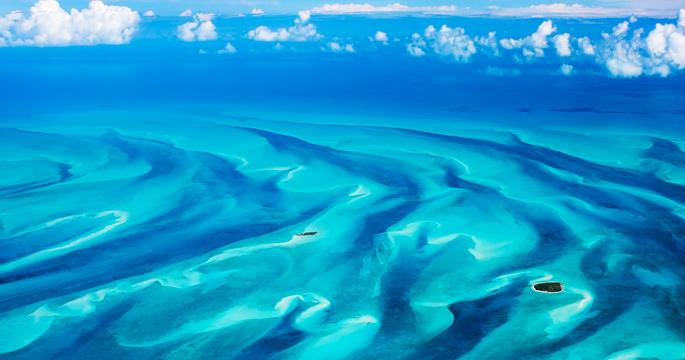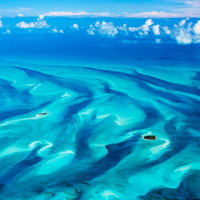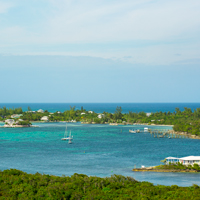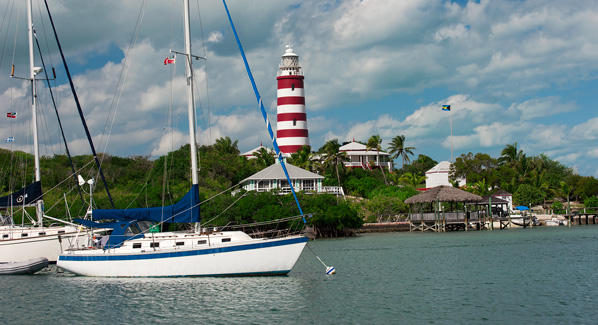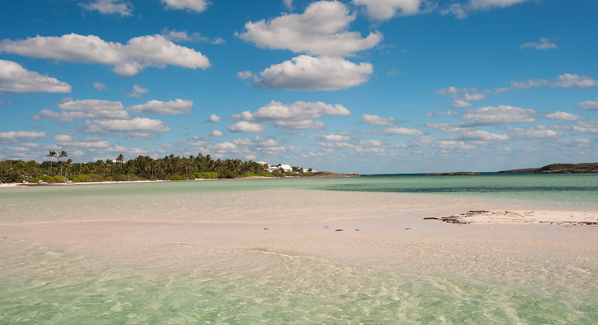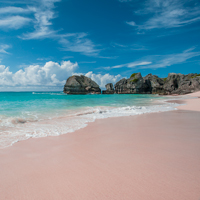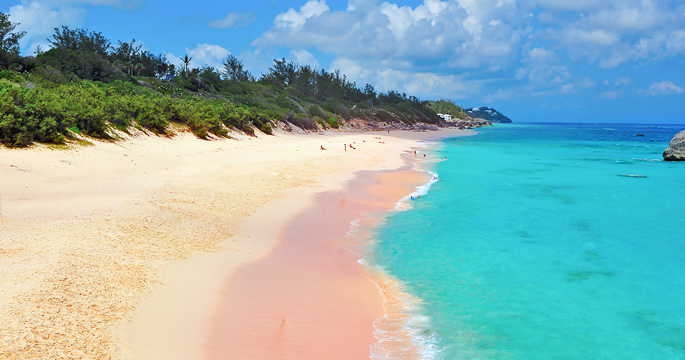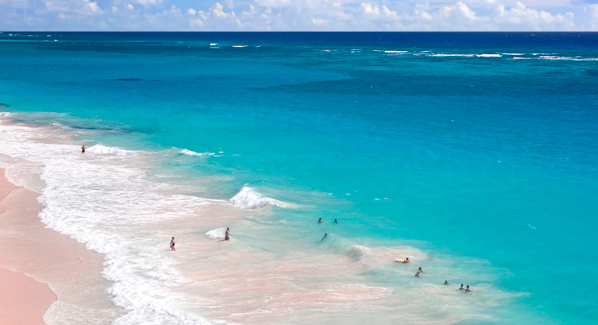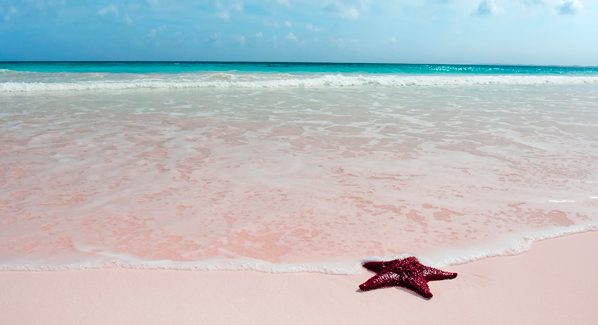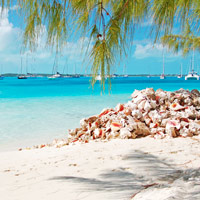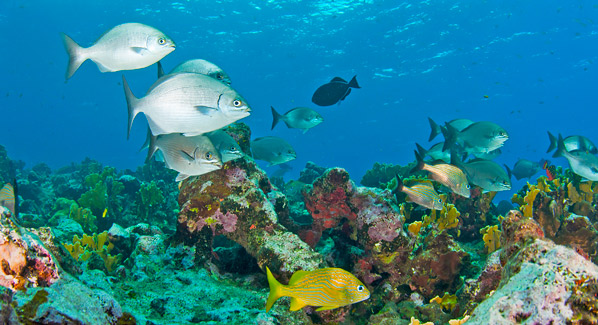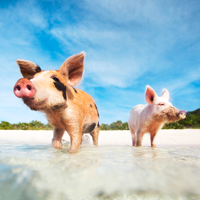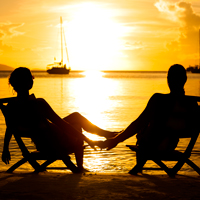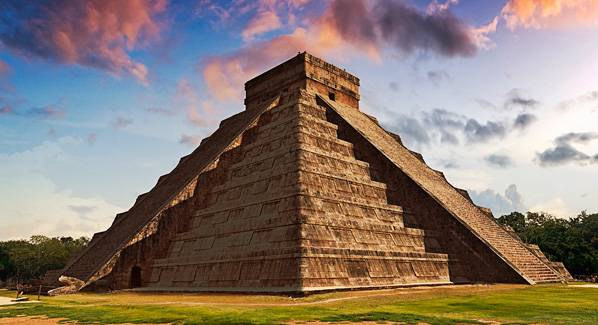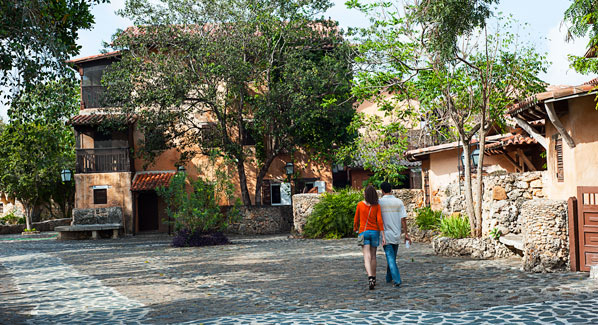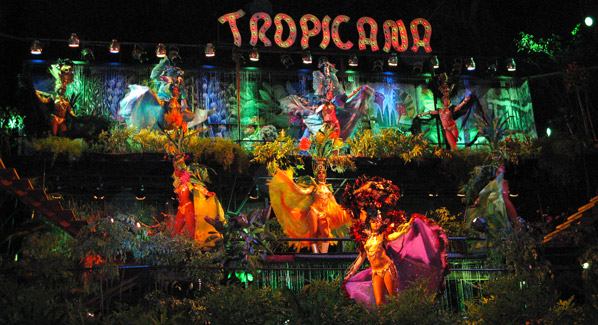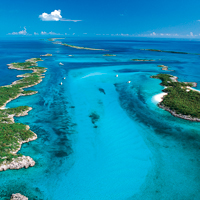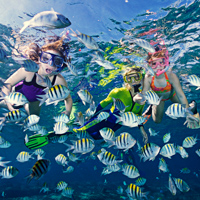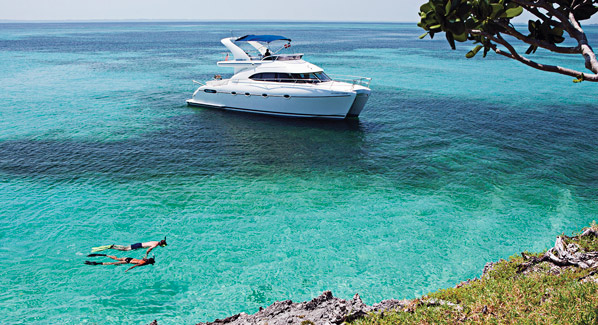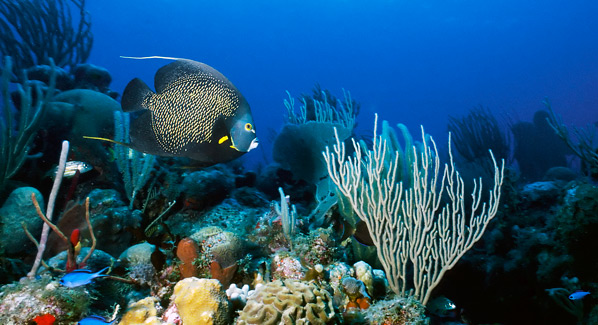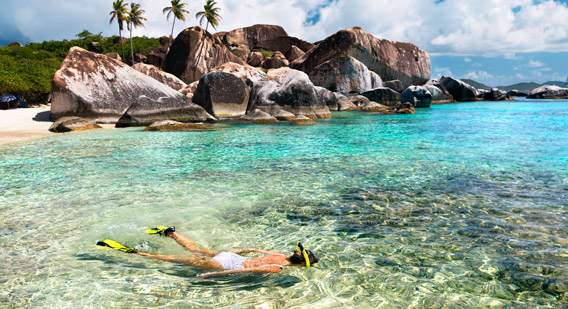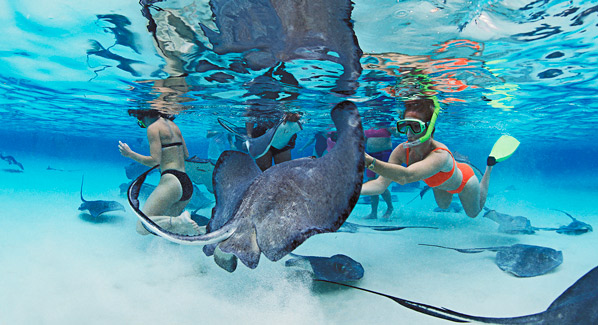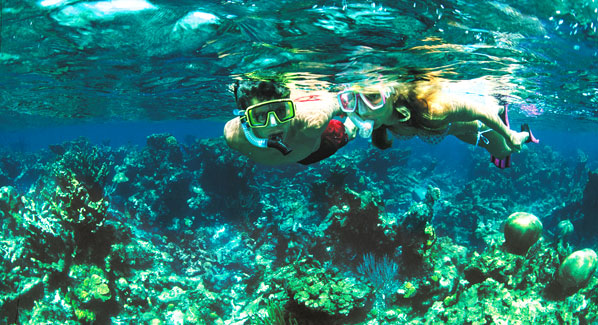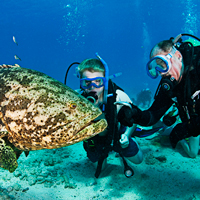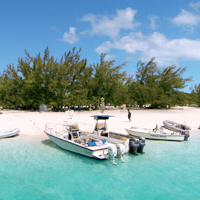Barefoot on the beach, keeping time to an island beat with a tasty libation in hand is the quintessential tropical vacation indulgence. Here are seven of the Bahamas’ best bars where you can do just that.
Nippers
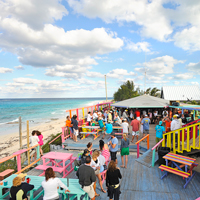
Nippers overlooks the Atlantic on Guana Cay, Abacos. Photo: Debbie Snow
The view alone is intoxicating. Perched high atop a dune overlooking the blue Atlantic, Nippers is the place to spend the day on Guana Cay. Steps lead up from a sparsely-settled swatch of powder sand to a multilevel complex of decks, outdoor and indoor serving areas and a pair of swimming pools. Beach games, televised sports and live music add to the fun, creating at atmosphere that is festive but still family friendly.
Where: Great Guana Cay, Abacos
Must Try: Nipper Juice
Get There: Fly into Marsh Harbour airport, taxi and ferry to Guana Cay, short walk to the beach
Stay There: Dolphin Beach Resort on Guana Cay; Abaco Beach Resort in Marsh Harbour
Chat ’n’ Chill
Join the cruising crowd who take daily shore leaves from the sloops and trawlers that bob in adjacent anchorages. You’ll be rubbing shoulders with grizzled boat bums and CEOs alike, and the action spreads beyond the bar to the pine-shaded picnic tables and volleyball courts. Come for open-air worship on Sunday morning and stay for the pig roast, where banker-turned- restaurateur KB Bowe presides over the pit.
Where: Stocking Island, Great Exuma
Must Try: KB’s Rum Punch
Get There: Fly into Exuma International Airport, taxi to Georgetown, water taxi to Stocking Island
Stay There: St. Francis Resort on Stocking Island; Grand Isle resort or Sandals on Great Exuma
Nirvana
A respite from the hustle of Nassau and the swank of Paradise Island, Nirvana is an old-school board-and-thatch beach club where you can grab a bite, savor a cold one or rent a beach chair to enjoy access to the uncrowded—and otherwise inaccessible—Love Beach. The vibe is low key during the day, but the action heats up at happy hour, and the party can go well into the night.
Where: New Providence
Must Try: Margarita
Get There: Cab, rental car or the #10 bus from Nassau
Stay There: Compass Point Resort is next door; mid-range Blue Water Resort and Sandyport Beaches Resort are a few miles to the east
Billy Joe’s On the Beach
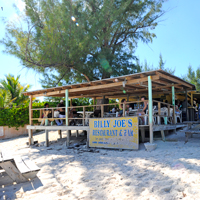
Billy Joe’s in Port Lucaya, Grand Bahama. Photo: Debbie Snow
This long-time landmark sits beachside, and in appealing contrast to the sleek, upscale Port Lucaya developments next door. There are no apologies for the rough plank flooring or plastic beach furniture because this place is all about direct water views, local music and what many consider the best conch salad in the islands.
Where: Lucaya, Grand Bahama
Must Try: Conch salad and a Kalik beer
Get There: Cab, rental car or stroll down the beach
Stay There: Pelican Bay and the Grand Lucayan are within walking distance; the value-priced Bell Channel Inn is a short cab ride
Bishop’s Big Boy Bar
It’s 45-minute pilgrimage east from Freeport to the quiet settlement of High Rock, where it may take a bit of searching to find Bishop’s Bonefish Resort. The reward is a near-deserted beach, and fresh run-and-juice concoctions served by Mr. Bishop himself. Rent snorkel gear to enjoy the reefs, then head over to the restaurant for some local seafood. It’s a no-frills place, but when sand, sun and sea are the focal points, you won’t miss the crowds, the DJs or the tiki torches.
Where: South shore, Grand Bahama
Must Try: Bahama Mama
Get There: Rent a car in Freeport and drive 25 miles east
Stay There: If quiet and simple are for you, book into Bishop’s adjacent seven-room resort
Sherri’s Paradise
The simple sundeck overlooking Bimini’s spectacular Radio Beach oozes island time; the adjacent yellow clapboard kitchen, with its variable hours and whatever-we-caught menu confirms the pace. Relax and order a cold one, because the cracked conch and lobster are worth the wait. You may want to linger even longer when there’s local music, or to catch a memorable sunset.
Where: Alice Town, Bimini
Must Try: Sherri’s Pina Colada
Get There: Fly to South Bimini and water taxi, or take a seaplane into the harbor
Stay There: Bimini Big Game Club remains the first choice while the future of Resort World is solidified
Pete’s Pub and Gallery
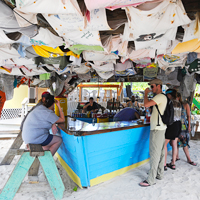
Unique bar at Pete’s Pub, Little Harbour, Abacos. Photo: Debbie Snow
Eclectic doesn’t begin to describe Pete’s Pub and Gallery. Part beach bar, part art gallery, it features the works of Peter Johnson and his progeny, who form their bronze creations in the on-site foundry. Wade right into the harbor to cool off, climb the upper deck for water views, or walk the sandy path to the surf-washed Atlantic.
Where: Little Harbour, Abacos
Must Try: Pete’s Rum Blaster
Get There: Drive a half-hour south from Marsh Harbour or go by boat
Stay There: On site is Barnacle Bill’s Cottage, or the Abaco Club in Marsh Harbour

